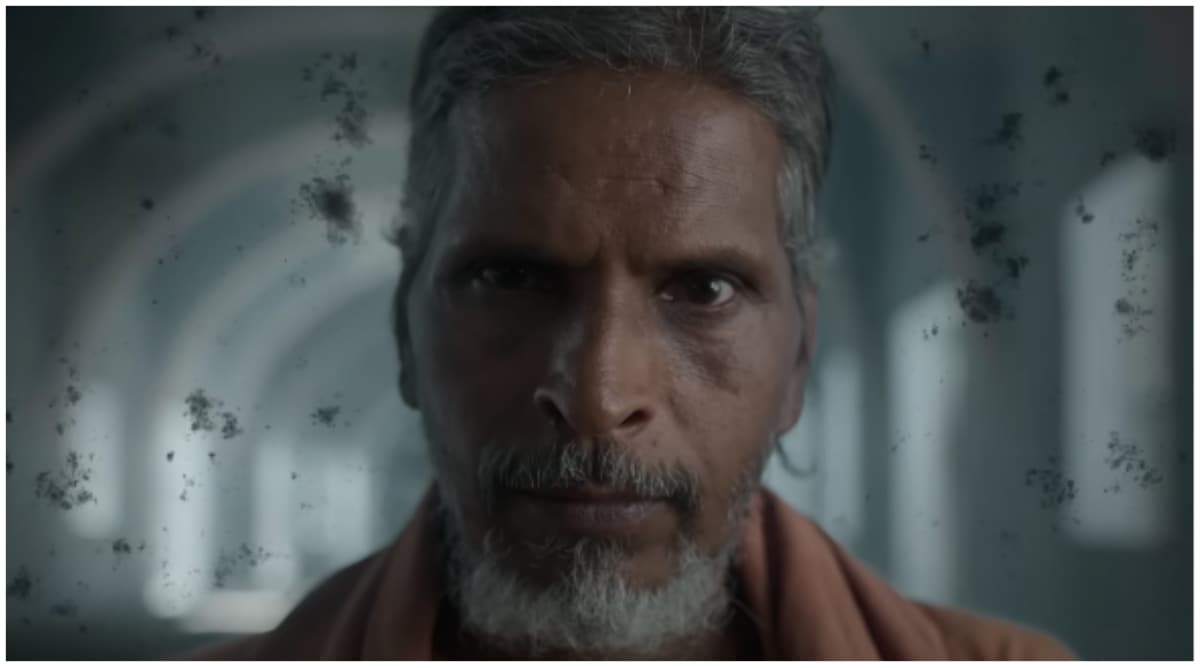 A still from Indian Predator: Diary of a Serial Killer. (Photo: Netflix)
A still from Indian Predator: Diary of a Serial Killer. (Photo: Netflix)Brimming with socio-political context and a willingness to peel back the psychological layers of its truly menacing subject, the second instalment of Netflix’s Indian Predator series of true crime documentaries, titled ‘The Diary of a Serial Killer’, is a significant improvement over the first. Released just a couple of months ago, The Butcher of Delhi was either willfully ignorant of its own shortcomings or simply unconcerned about its obvious lack of depth. Nothing about it inspired any sort of confidence in this one, which, granted, was produced by a different team altogether.
The structure is the same, though; even the tone is similarly sleazy. With the help of detailed recreations and expert voices ranging from the police to prison inmates, the show examines a series of killings that happened in rural Uttar Pradesh over 20 years ago, perpetrated by a man who, among other things, was also accused of cannibalism. The Diary of a Serial Killer has one key ingredient that separates it from its predecessor: an on-camera interview with the serial killer himself.
What separates a good true crime documentary from a poor one, in most cases, is its ability to examine the circumstances behind the crimes, and to present well-argued explanations for why they were committed. Divorced of context, documentaries such as this have little option but to focus on the most salacious aspects of the story.
The Butcher of Delhi was guilty of all this and more. Through inaction more than anything else, the show failed to hold the police accountable for the glaring lapses in their investigation, to the point that it soon began to resemble the sort of glorified PR exercise that Delhi Crime, especially in its second season, has become.
And for an entire episode, I was convinced that The Diary of a Serial Killer was headed in the same direction. That first episode is choppily edited, overly reliant on shock value, and has the vibe of an AajTak prime time debate, which makes sense, if you know who produced it. The camera lingers on scenes of gruesome brutality, and you can sense the show’s hesitation in following up stray comments about Uttar Pradesh being a historically lawless state.
But episode two, in addition to featuring the convict for the first time, also provides some valuable insight into his methods. A social activist shows up to inform us that the killer belongs to the marginalised Kol community, and an anthropologist drops by to tell us what that means. The ‘doubly-subaltern’ Kol community, he says, was displaced from its land, and forced to live in slums. Because of their tribal background, the Kols would be perceived by members of the upper-caste as primitive and barbaric. You don’t question the authenticity of anthropologist’s claims for even a second, but the show leaves no room for doubt when it has the investigating police officer in the case spout bigoted nonsense about the Kols moments later. “These are just my views,” he says, as if that is supposed to make things better.
The killer, a clinical psychologist theorises, was aware of his lowly position in society, and surrounded by the rise of Dalit movement in politics — this happened around the year 2000, when both Mayawati and Phoolan Devi became household names — decided that he, too, should acquire power. He disowned his birth name — the rather unassuming Ram Niranjan — and began calling himself Raja Kolander, ‘The King of the Kols’. He named his kids Adalat, Jamanat and Andolan — almost as if he was baiting the system genealogically.
The sole interview with Raja Kolander is chopped up into segments interspersed with expert commentary about his delusions. This doesn’t at all humanise the killer, or make us empathise with him, but it certainly makes the viewing experience more enriching. It also saves The Diary of a Serial Killer from being the sloppy, surface-level sleaze-fest that The Butcher of Delhi was. Although, it must be said, Netflix’s best local true crime documentary remains House of Secrets: The Burari Deaths, an unsettling show that ended with a person literally questioning the existence of God.
The Diary of a Serial Killer isn’t without fault, though. In addition to the ‘sansani khez’ storytelling style, the show also neglects to question the systemic failures that led to a man’s crimes being discovered only after he had killed his 14th victim. Nor does it care to examine Raja Kolander’s claims that of the 14 people he was accused of killing, two turned out to be alive and kicking. Glaring missteps aside, the show walks a fine line between exhuming the past and exploiting the present.
Indian Predator: The Diary of a Serial Killer
Director – Dheeraj Jindal
Rating – 3.5/5